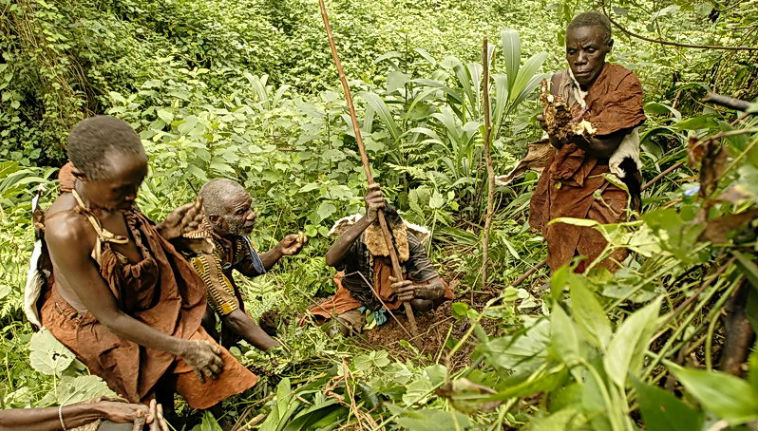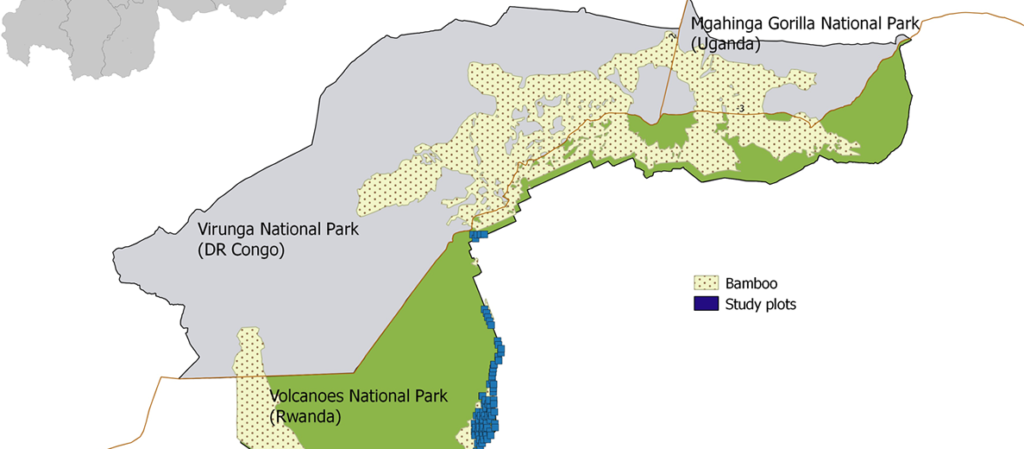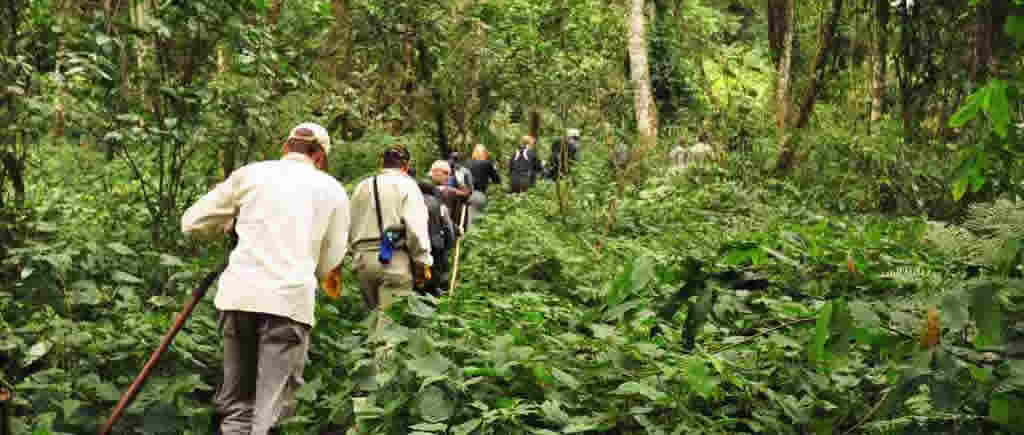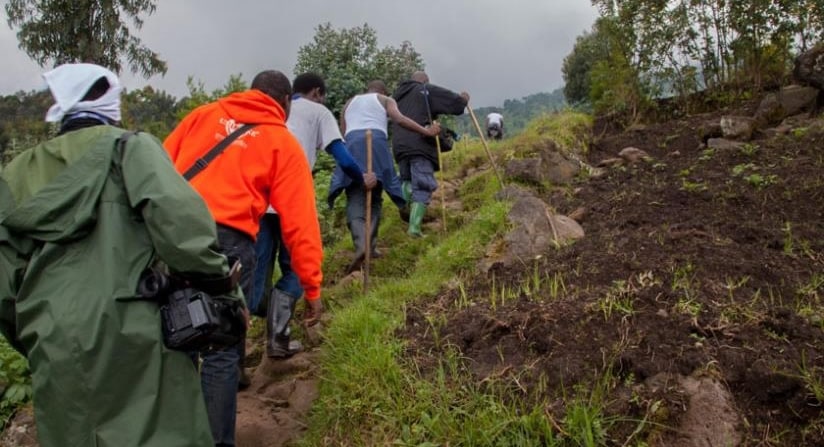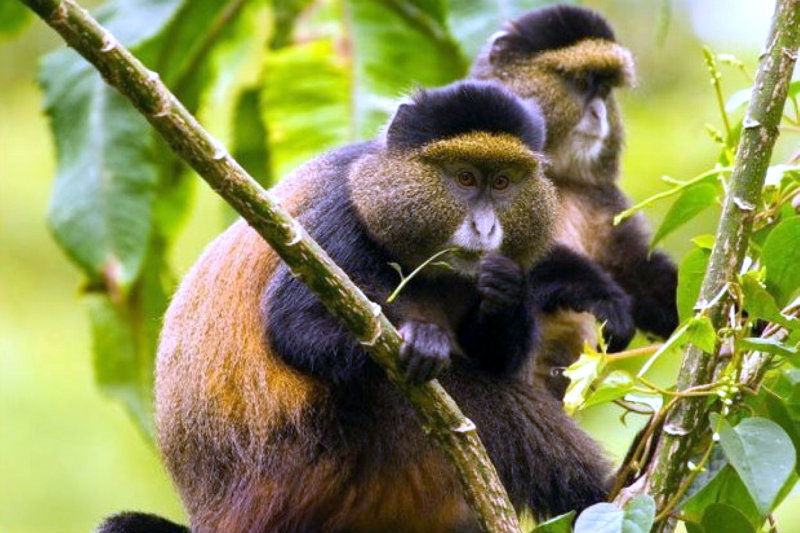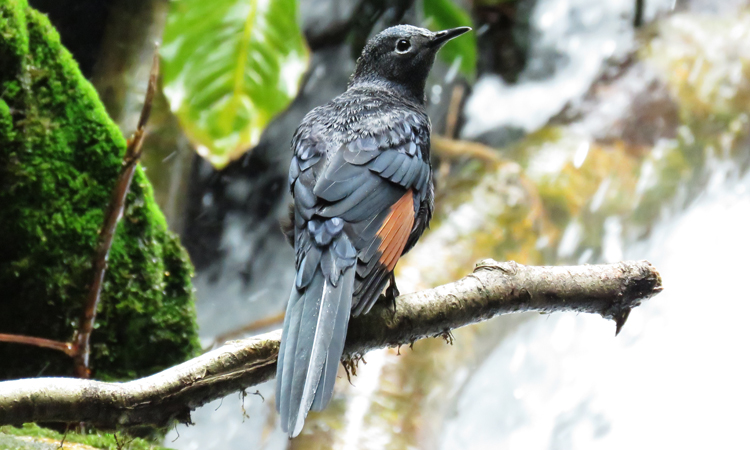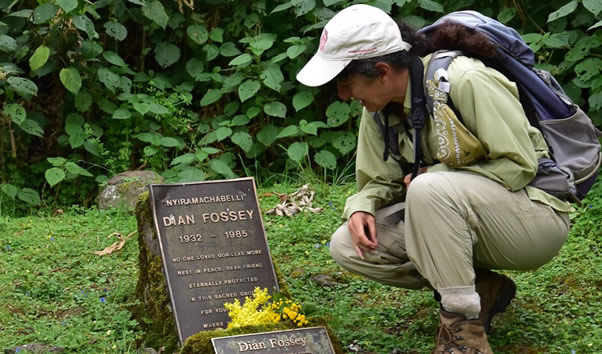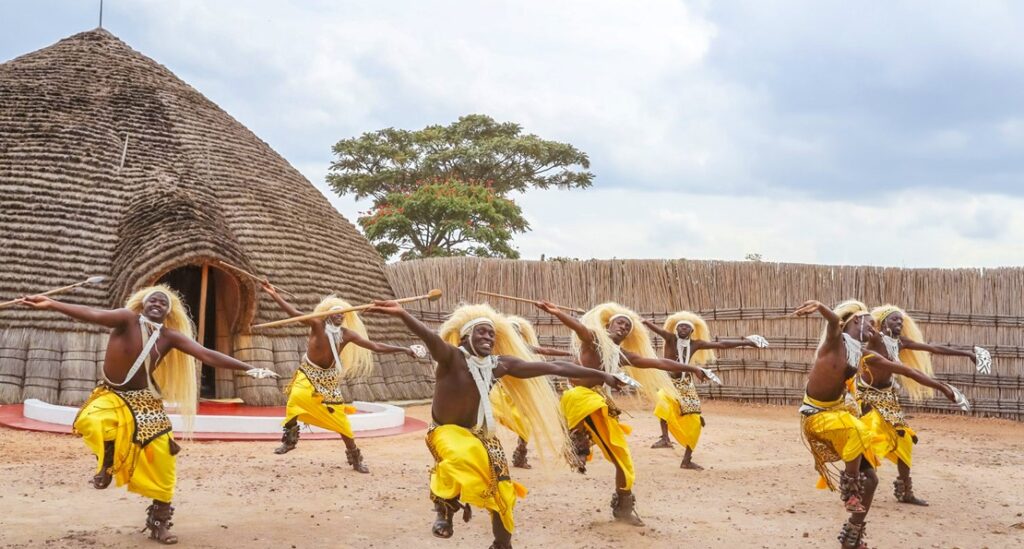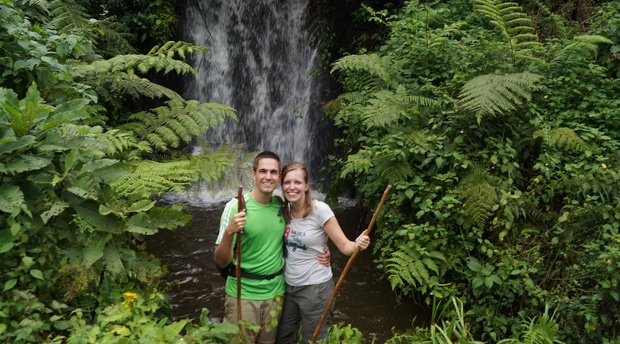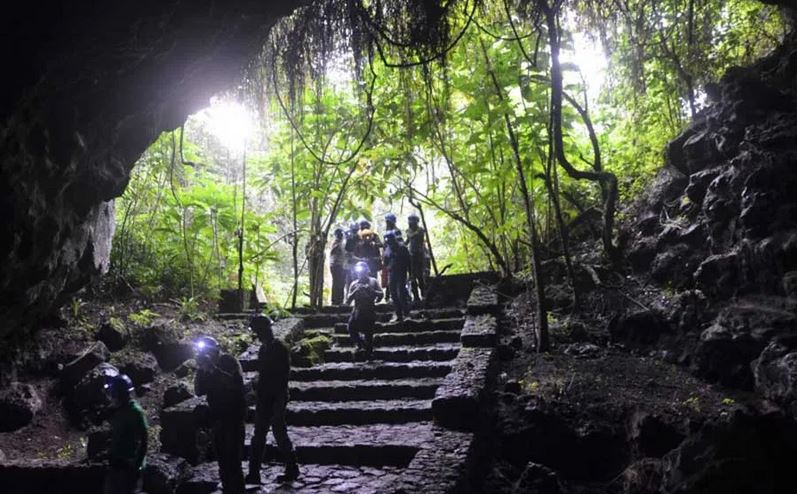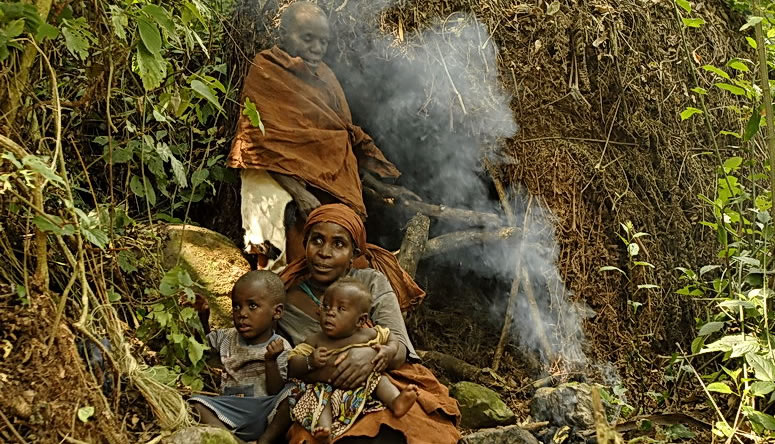The Batwa cultural trail provides a deep understanding of the Batwa cultures, traditions, and practices and it comes with remarkable cultural entertainment. The Batwa lived in Mgahinga Gorilla National Park and Bwindi National Parks in Uganda for thousands of years as hunters and gatherers. They spent 1000s of years hunting and gathering fruits, plus other plants of medicinal importance.
The Batwa pygmies are among the earliest ethnic groups to stay in Uganda, the Pearl of Africa. They inhabited the thick forests along the Great Lakes Area for 1000s of years, and they were later displaced when the need to conserve the protected areas they lived in reached. They had everything they needed in the tropical rainforests, and they left with no negative impact left.
Whenever they became hungry, they could just hit the jungles and hunt small animals/mammals. They also had knowledge of every plant of medicinal importance and each time they felt sick, they had solutions. They kept themselves off from other groups of tribes and when it comes to wars, they were so much feared.
They spent most of their time inside the Ituri Forest of Congo, although they left and occupied some parts of Bwindi Impenetrable National Park, Volcanoes National Park, and Mgahinga Gorilla National Park. Others moved to occupy the Echuya Forest Reserve.
The Batwa pygmies had freedom in the wild, with no idea that one day, they would exit the jungles of Bwindi and Mgahinga. Both Bwindi Impenetrable National Park and Mgahinga National parks were gazetted in 1991, and this led to the displacement of the Batwa in the forest. The displacement rendered them marginalized. Other tribes that originally lived in the local communities the Batwa pygmies live now looked at the Batwa as different. Their culture was absolutely different from the rest of local residents.
The government and other international organizations such as USAID played a significant role to ensure that the Batwa adapt to the new environment. The resettlement and rehabilitation weren’t done properly although so far, success stories have been registered.
A number of local initiatives were designed to assist the Batwa, but still, they are still considered among the poor. The standard of living still remains far below that of an average Ugandan and this can be attributed to the fact that they still practice their ancient ways of life.
The government continues to be strict on forest encroachment, and as a result, the majority of the Batwa pygmies now live as squatters in Bakiga farmlands and other neighboring tribes. The Bakiga are naturally hard-working and they depend on farming plus other small enterprises. The Batwa were left behind as they can’t compete with the Bakiga and most of them resorted to drinking.
Who is assisting the Batwa Pygmies?
There are many organizations and individual donors that work together with the Ugandan government to fight against poverty, primitive practices, marginalization, etc. These different groups all exist in the Batwa pygmies’ local communities where over 3500 Batwa live.
The popular organizations that have and still play a significant role in the lives of the Batwa in their communities include USAID- The United States Agency for International Development, United Organization for Batwa Development in Uganda (UOBDU). The first foreign humanitarians to raise funds for the Batwa pygmies include Dr. Scot Kellerman & Carol Kellerman. The two began some simple initiatives in line with water and sanitation.
In the end, Scot & Carol didn’t only bring clean and safe water but also created awareness of the plights of the Batwa to other influential donors outside Uganda. Schools, health centers plus other service-providing facilities have been set up as well and this has played a big part in enhancing the lives of the Batwa pygmies.
The Batwa cultural trail or experience is an initiative Uganda Wildlife Authority and BOBDU came up with as a way to help the Batwa benefit from tourism and enhance their source of income. On a gorilla safari to Mgahinga Gorilla National Park or Bwindi Impenetrable National Park, the Batwa cultural trail/experience is a perfect addition.
On Batwa cultural trail, visitors get to learn how the Batwa lived as hunters and gatherers, the unique cultures, traditions, practices, and more. This is also accompanied by incredible entertainment characterized by dances, music performances and so much more.
The Batwa cultural trail can last for approximately 5 hours and visitors are led by experienced local Batwa guides. Each participant on the Batwa trail pays USD80 and if you visit as a group, you enjoy a 10% discount. To film or document the Batwa, you will be required to pay USD400.
Other activities to do -Mgahinga Park
 On Uganda safari in Mgahinga National Park, other most amazing tourist activities to do include guided mountain gorilla trekking (this is ideal for visitors who are interested in mountain gorilla encounters) nature walks, hiking/volcano climbing, golden monkey tracking, and birding.
On Uganda safari in Mgahinga National Park, other most amazing tourist activities to do include guided mountain gorilla trekking (this is ideal for visitors who are interested in mountain gorilla encounters) nature walks, hiking/volcano climbing, golden monkey tracking, and birding.
When to visit
The best months of the year to plan a safari to Mgahinga National Park should be around the dry months although the park is notably an all-year-round travel destination. There are 2 phases of dry months -the long often runs from June, July, August, and September, then short dry months occur from December, January, to February.
Where to stay
 There are several lodges, hotels, and camps for travelers sending overnight in Mgahinga Gorilla National park. These are categorized into the budget, midrange, and luxury providing excellent food and sleeping services at affordable prices.
There are several lodges, hotels, and camps for travelers sending overnight in Mgahinga Gorilla National park. These are categorized into the budget, midrange, and luxury providing excellent food and sleeping services at affordable prices.
• Mount Gahinga Lodge
• Mount Gahinga Rest Camp
• Amajambere Iwacu Community Camp
• Traveler’s Nest Hotel
• Virunga Hotel
• Mucha Hotel Kisoro
• Mutanda Lake Resort
• Lake Mutanda Campsite
Getting there
The Batwa trail is explored while on a Uganda safari in Mgahinga National Park. This is located in Southwestern Uganda. From Kampala to the Batwa trail, it takes about 8-10 hours’ drive but there are options of making stopovers en route, especially at the Equator. The towns/cities to drive through before you get to Mgahinga National Park include Masaka, Mbarara, and Kabale/Kisoro.
From Kigali, drive through the Chanika border and connect to Kisoro, Mgahinga Gorilla National Park. This is a short road trip of about 4-5 hours’ drive in a 4×4 tourist vehicle or fly from Entebbe International Airport to Kisoro airfield, and from the airstrip, connect to Mgahinga Park for relaxation at the lodge.






